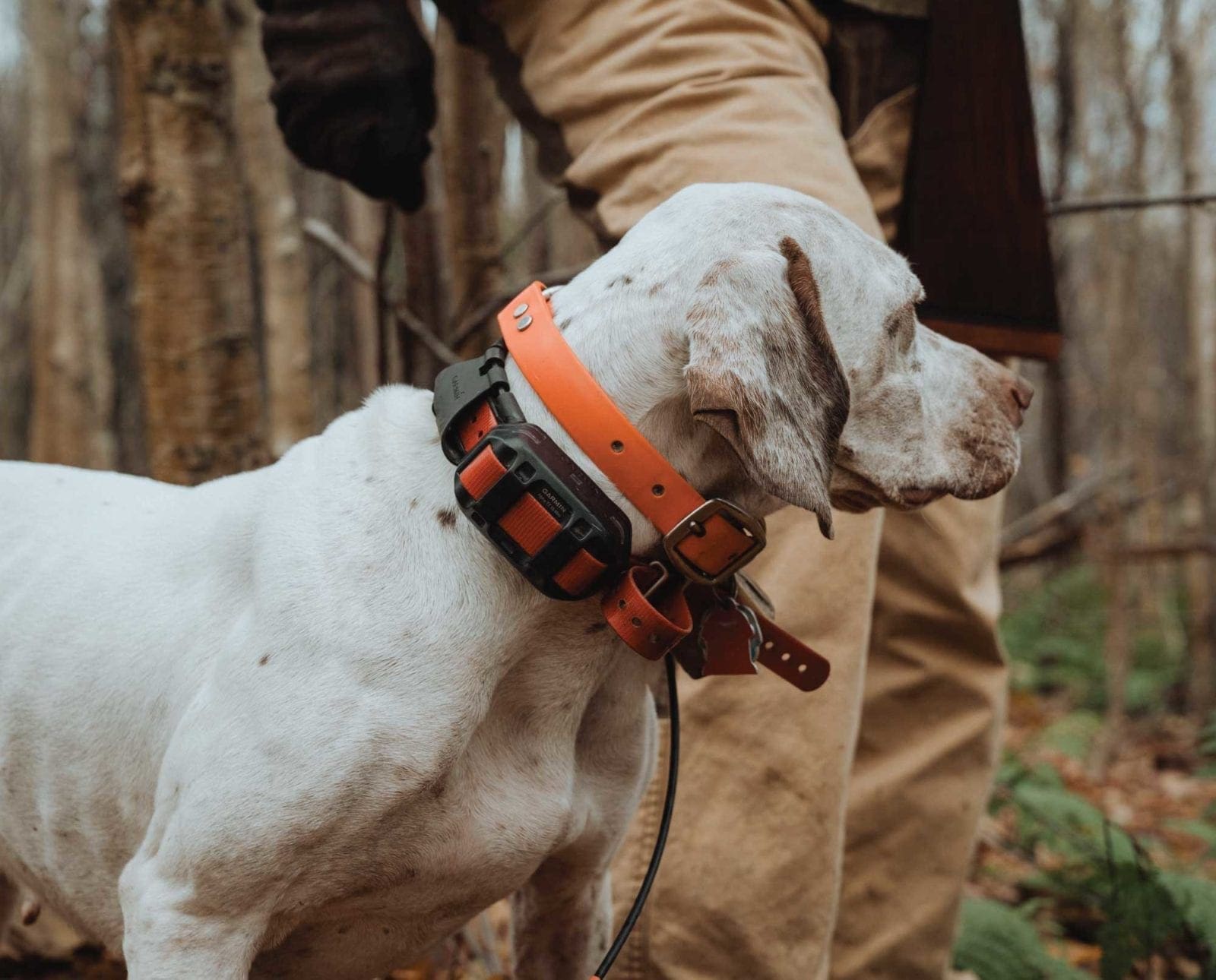Home » Hunting Dogs » Pointer – A Bird Hunting Dogs Series
Pointer – A Bird Hunting Dogs Series

Nancy Anisfield is an outdoor writer and hunting dog photographer,…
Many consider the pointer to be the quintessential upland pointing dog
Original purpose
According to the breed parent club, the American Pointer Club, British army officers brought pointing dogs home after the War of Spanish Succession in the early 1700s. In Great Britain, the breed was developed to stand game for both bird and small game hunters. While its ancestors are believed to be a mixture of the Spanish pointer with foxhounds, greyhounds and bloodhounds, the English pointer has “paid it forward” by being used to develop or enhance many subsequent breeds such as the German Shorthaired Pointer, Vizsla, and Braque D’Auvergne.
The breed’s original designation of “English pointer,” still used by the UKC, has been changed to “pointer” which is used by the AKC, NAVHDA, and the American Pointer Club.
Hunting style and temperament
Flat-out, hard-running athleticism paints the word picture to describe a pointer’s hunting style. Until the dog stops. When the dog is on point, elegance and arrogance take over, punctuated by the iconic staunch tail that seems to pierce the sky. Pointers are generally not natural retrievers, although they certainly can be taught to retrieve. In the horseback field trial world, where speed and distance determine the crown, pointers are royalty. As hunters, they can do it all but are best geared for big country and wide range hunting such as Idaho chukar, Alaska ptarmigan, or Texas quail. They tolerate hot weather well.
Pointers have a reputation for being aloof and independent, but those that are socialized with the family from an early age will snuggle like a pro. This is a very energetic breed that needs exercise. Their notable intelligence can make them stubborn and mischievous.
Traits important to hunters
Size
Weight 55-75 males, 45-65 females. Height 23-28”.
Coat
Short, tight, with low to moderate seasonal shedding.
Maturity
Pointers are precocious and have sight and scent pointing at an early puppy age.
Health risks
No major risks are inherent in the breed other than those broadly associated with large breed sporting dogs. Epilepsy has appeared.
Finding a good breeder
Along with kennels breeding the celebrated Elhew pointer line, there are many fine pointer breeders in the country. Fortunately, pointers have not been darlings of the show ring or top of the home companion list. This means that the odds of finding excellent hunting lines in a variety of hunting regions is quite good. The best advice is to seek a breeder who lives and hunts where you plan to hunt. Responsible breeders should provide test information on hip and elbow dysplasia, von Willebrand disease, and eye certification.
Nancy Anisfield is an outdoor writer and hunting dog photographer, creative director for the Ugly Dog Hunting Company, member of the Pheasants Forever / Quail Forever Board of Directors, and co-owner of the Track2Wing Project which grants Action trackchairs to individuals with mobility challenges who want to train and hunt with bird dogs. She and her husband live in Hinesburg, Vermont, where their lives are governed by her two German shorthaired pointers and his two German wirehaired pointers.





Spot on! I’ve never met another breed with as much natural instinct to hunt. Training them to hunt for you is the challenge. They will run circles around most breeds and their point is made for pictures.
Love my Pointers. I’ve had field bred and bench lines – I prefer bench lines for myself. They still love to hunt and will run all day, but don’t NEED to run all day to burn off energy. Funny, snuggly, and quirky dogs. My favorite breed.